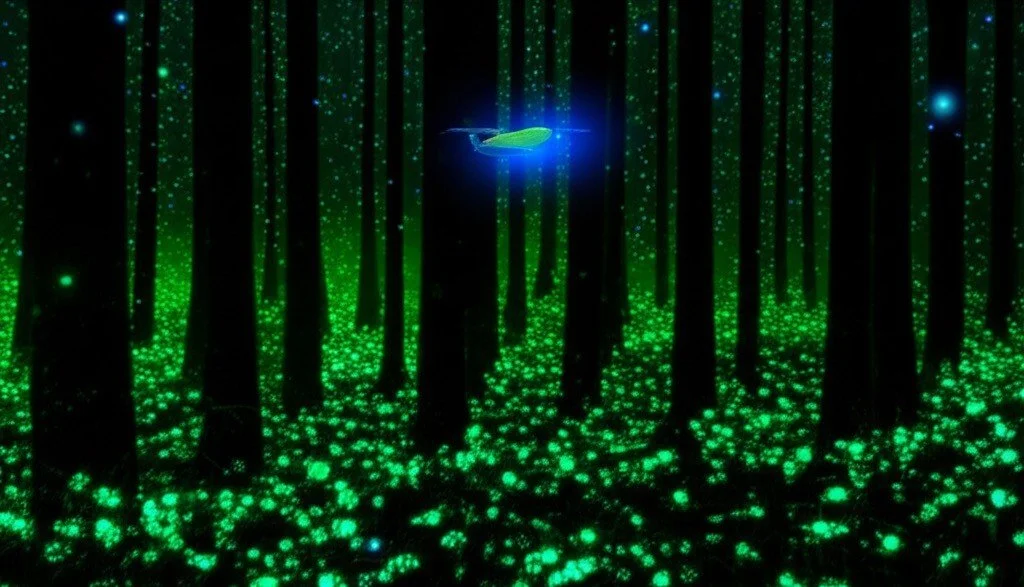Sky-Readable Bacteria: MIT Engineers a Breakthrough in Remote Biosensing
For years, scientists have dreamed of using living cells as intelligent environmental monitors—tiny bioengineered agents embedded in the soil that could detect pollutants, nutrients, or toxins. But while bacterial biosensors have long been successful in the lab, their practicality in real-world environments has hit a major stumbling block: visibility. Traditionally, these biosensors rely on fluorescent signals that require close-range imaging and specialized equipment, making them all but invisible outside controlled settings.
Now, a groundbreaking innovation from MIT has shattered that barrier. In a leap that could transform everything from precision agriculture to planetary exploration, researchers have developed a new class of bacterial biosensors whose light-based signals can be read from nearly 300 feet (90 meters) away—using drones, aircraft, or even satellites.
“It’s a new way of getting information out of the cell,” says Christopher Voigt, senior author of the study. “If you’re standing next to it, you can’t see anything by eye, but from hundreds of meters away, using specific cameras, you can get the information when it turns on.”
At the heart of this new technology lies a sophisticated pairing of genetic engineering and hyperspectral imaging. The bacteria are modified to emit unique optical signatures—molecular beacons that fall within both the visible and infrared spectra. When triggered by specific environmental conditions, such as the presence of a heavy metal or a nutrient, these bacteria begin producing molecules that can be seen not by the human eye, but by hyperspectral cameras capable of parsing subtle light differences with incredible precision.
Unlike traditional fluorescent proteins, these new “hyperspectral reporters” are specifically chosen for their rarity and distinctiveness. To find the ideal candidates, Voigt’s team analyzed more than 20,000 natural compounds using quantum chemical models, seeking molecules that produced standout spectral fingerprints while remaining simple enough for a cell to synthesize efficiently.
Two clear winners emerged: biliverdin, a pigment derived from heme metabolism used in Pseudomonas putida; and bacteriochlorophyll, a photosynthetic molecule employed by Rubrivivax gelatinosus. Each one was linked to genetically encoded sensor circuits that activate when the bacteria detect a target compound. Once switched on, the bacteria emit their unique spectral signal—an optical calling card that can be remotely identified and analyzed.
“The nice thing about this technology is that you can plug and play whichever sensor you want,” says Yonatan Chemla, co-lead author of the study. “You could respond to metals, radiation, toxins in the soil, or nutrients. The output of that would be the production of this molecule that can then be sensed from far away.”
The transition from lab to field was equally elegant. The researchers encased their modified bacteria in small, secure containers and deployed them on rooftops and desert test sites. Drones equipped with hyperspectral cameras flew overhead, scanning each test area in less than 30 seconds. Algorithms then parsed the spectral data to pinpoint which bacterial sensors had been activated, and how strongly.
In one trial, the team observed a quorum-sensing response—a population-dependent biological signaling mechanism—through changes in the spectral signal. In others, they demonstrated detection of specific environmental contaminants such as arsenic. The system is modular, allowing for different sensors to be easily swapped into the bacterial genome depending on the application.
And those applications are vast. In precision agriculture, farmers could use the bacteria to monitor real-time nitrogen levels across large fields. In environmental monitoring, the technology could detect toxic pollutants in hard-to-access regions or locate buried hazards like landmines. Looking ahead, Voigt envisions a future where these biosensors could even be engineered into plant cells themselves, turning crops into living communication networks that transmit vital soil health data through flashes of detectable light.
Beyond Earth, the potential stretches further still. Because these bacteria require no bulky electronics or power supplies, they could offer lightweight, durable sensing systems for space missions, surviving harsh conditions while providing long-range biological insight into alien environments.
Crucially, the MIT team is taking the regulatory and ethical dimensions seriously. “We’ve been very busy in the past three years working to understand what are the regulatory landscapes, what are the safety concerns, what are the risks, what are the benefits of this kind of technology?” says Chemla.
The answer, it seems, lies in balance: pairing the raw adaptability of biology with the precision of photonics and data science. With this fusion, the invisible becomes visible—not just to nearby instruments, but to machines soaring hundreds of feet overhead. And in that light, a new era of biosensing begins.
This article contains AI generated content using information from these sources:
Interesting Engineering - https://interestingengineering.com/science/engineered-bacteria-send-signals-to-drone
